Chlorination is a drinking water disinfection method that’s commonly used in water treatment plants.
Here, we’ve shared everything you need to know about this water treatment process, including what it is, how it works, why it’s needed, and more.
📌 Key Takeaways:
- Chlorination is the process of adding chlorine to a water supply to prevent waterborne disease outbreaks.
- The amount of chlorine needs to be sufficient to kill microorganisms and prevent recontamination throughout the water system, but must be within EPA maximum allowances.
- Chlorine disinfection is accessible and affordable, but produces disinfection byproducts and doesn’t offer protection against contamination for as long as other disinfection chemicals.
Table of Contents
- 🤔 What Is Chlorination?
- 🔎 How Does Chlorination Work?
- 📐 How Much Chlorine Is Used To Disinfect Water?
- 🧐 Why Is Chlorination Needed?
- 🚰 How Does Chlorine Affect Water Quality?
- ⚖️ Pros & Cons of Chlorine Disinfection
- 🔀 Alternatives To Chlorination
- ⛔️ How To Remove Chlorine From Water At Home
- ❔ Drinking Water Chlorination: FAQ
🤔 What Is Chlorination?
Chlorination is when a measured amount of chlorine is added to drinking water with the purpose of disinfection.
It’s one of the most common water treatment methods, and many public water systems use chlorine for disinfection because it’s easily accessible and affordable for large-scale use.
Chlorination usually takes place as the final treatment process, usually following coagulation, flocculation, sedimentation, and filtration. It’s common for treatment plants to treat water with chlorine twice over, with primary disinfection (which kills microorganisms) and secondary disinfection (which protects the water from recontamination in the distribution system).
However, some public water systems also conduct an initial pre-chlorination stage, which kills algae and other aquatic life that could affect the later treatment processes.
👨🔧 Want to learn more about the stages of treating water? We’ve shared an overview of these steps in this drinking water treatment guide.
Once in its filtered, disinfected form, water is ready to be delivered to homes and businesses in the distribution system.
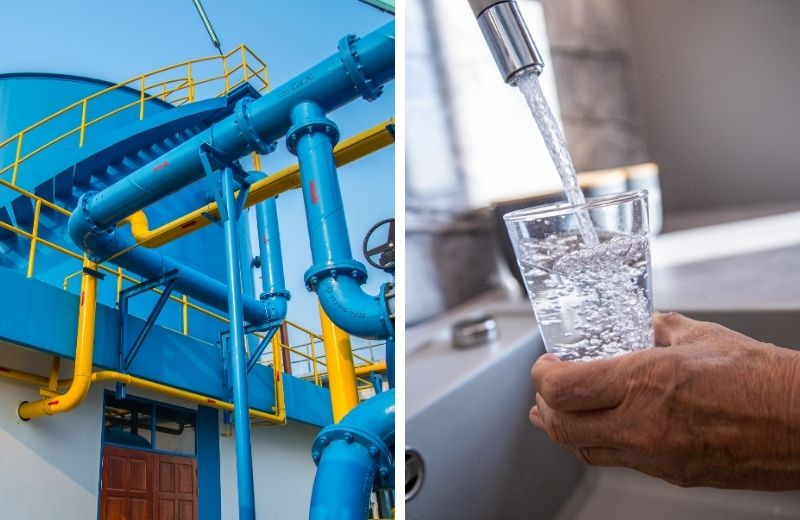
🔎 How Does Chlorination Work?
Chlorination works by breaking the chemical bonds in bacteria, viruses, and other microorganisms.
This prevents these microorganisms from growing and replicating, so they’re unable to cause waterborne diseases.
In a water treatment plant, chlorine is usually injected into water in a chemical feed system. A chlorine-based product, such as calcium hypochlorite or sodium hypochlorite, or a chlorine gas, is added to the water.
It takes around 30 minutes for the chemical to thoroughly treat the entire batch of water.
📐 How Much Chlorine Is Used To Disinfect Water?
The amount of chlorine used to disinfect water depends on several factors, including:
- The volume of water being treated (the bigger the batch of water, the more chlorine that must be used)
- The distance that the water must travel (more chlorine is needed to protect water that must travel longer distances)
- The initial water quality (poorer-quality water may require more thorough disinfection)
The Environmental Protection Agency (EPA) has set a maximum residual disinfectant level of 4.0 milligrams per liter (mg/L) or parts per million (PPM) in drinking water supplies. That means that up to 4.0 PPM of chlorine is considered effective for disinfection and safe in water, and any amount higher than this may have adverse effects.
Public water systems must make sure to add enough chlorine to their water to kill bacteria and viruses while remaining within the EPA maximum allowances.
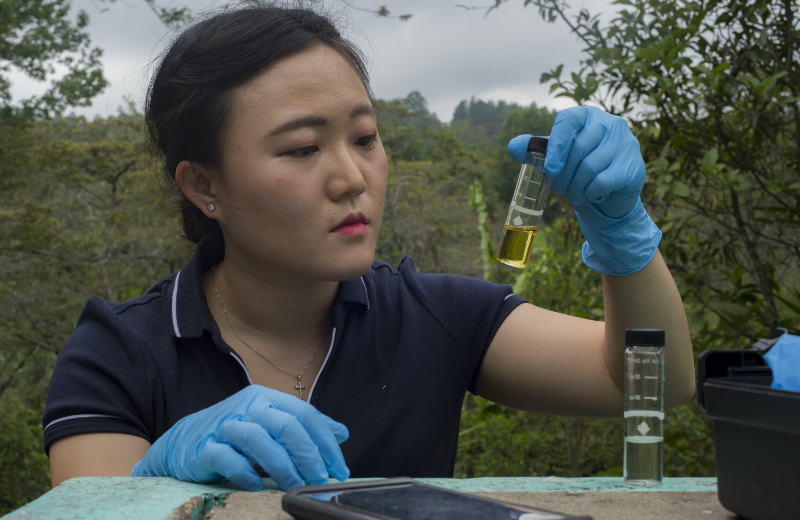
🧐 Why Is Chlorination Needed?
Chlorination is needed to protect drinking water supplies from microorganisms that cause disease.
There’s no saying for certain that an untreated water source contains pathogens. However, there’s always a potential for microbial contamination, especially in surface water supplies.
Water from a river, lake, or another surface supply has a moderately high likelihood of microbial contamination because the water is exposed to the elements. Animal waste, and runoff from septic systems, roadways, farms, and sewage treatment plants, could also potentially contaminate a surface water supply.
If we were to drink this water before treatment, you would risk getting sick from drinking waterborne pathogens.
Some of the common pathogens found in raw water supplies include:
- Legionella
- Giardia lamblia
- Cryptosporidium
The most common gastrointestinal diseases caused by bacteria in water are salmonellosis, cholera, and shigellosis. Raw water also carries the risk of giardiasis, cryptosporidiosis, Escherichia coli, hepatitis A, dysentery, polio, and typhoid.
Groundwater (underground) sources like wells and springs are less likely to be contaminated with bacteria and other pathogens because they’re often located deep beneath the ground. However, again, there’s no guarantee that these water sources are microbiologically safe, and many water utilities chlorinate groundwater sources too, to stay on the safe side.
Wastewater treatment facilities also use chlorination in their water treatment processes. Usually, wastewater isn’t treated for drinking, but it’s still chlorinated before being released back into the environment to kill any harmful pathogens that are present.
🚰 How Does Chlorine Affect Water Quality?
Chlorine mainly affects water quality aesthetically. This means that chlorine shouldn’t pose a health risk in your drinking water in the low levels deemed safe by the EPA, but it might still have an effect on your water’s taste and odor.
Many people complain that chlorine gives their water a swimming-pool chemical smell and taste. This is one of the reasons why water filters are so commonly used for chlorine removal – because removing chlorine gives water a fresher, more natural taste.
While chlorine itself doesn’t reduce water safety, it may still be responsible for affecting this aspect of water quality due to the production of disinfection byproducts.
When chlorine reacts with naturally occurring organic compounds in water, byproducts like haloacetic acids and total trihalomethanes are formed. These chemical byproducts are linked to health effects like cancer, so they have a major impact on water quality.
What’s worse is that the EPA doesn’t currently regulate most of these byproducts in drinking water systems, so water utilities aren’t legally required to reduce them to specific concentrations.
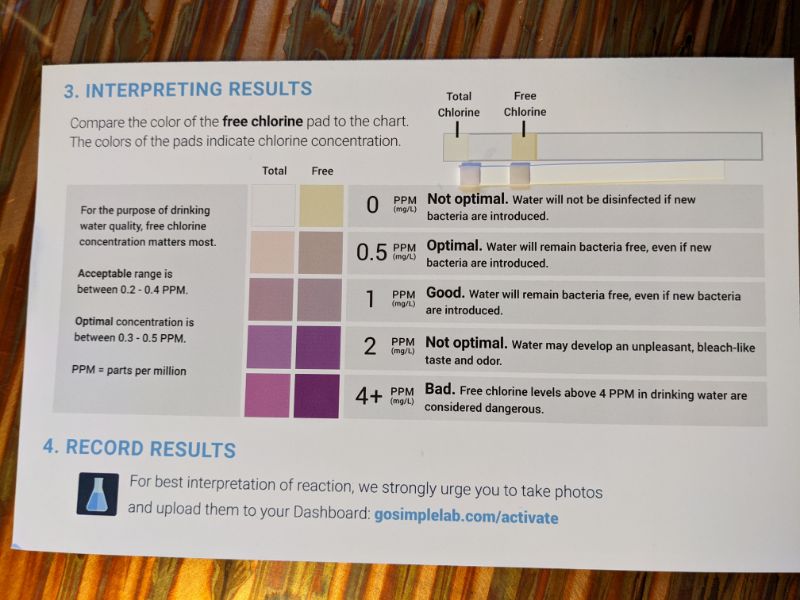
⚖️ Pros & Cons of Chlorine Disinfection
Let’s look at the top advantages and setbacks of adding chlorine to water for disinfection.
Pros:
- Accessible and affordable. The most obvious benefit of drinking water chlorination is that chlorine is widely available and affordable. This makes it ideal for large-scale water treatment, since water utilities aim to keep costs as low as possible.
- Highly effective water treatment. Chlorination is an effective method of water disinfection. As long as the right amount of chlorine is used, this chemical can be relied on to effectively kill bacteria and virtually eliminate the risk of waterborne diseases.
Cons:
- Produces disinfection byproducts. The biggest disadvantage of using free chlorine for water disinfection is that it reacts with naturally occurring matter in the water, producing disinfection byproducts. Research into the health effects of disinfection byproducts has uncovered concerning evidence that links these chemicals to cancer, liver damage, and nervous system effects.
- Doesn’t linger in water as long as other chemicals. Chlorine doesn’t last as long as other disinfection chemicals, like chloramine, in water. That means that water may not be 100% protected against microorganisms by the time it reaches the faucet, especially if it has to travel for tens of miles to get there.
- Doesn’t kill all microorganisms. Certain types of protozoan cysts are resistant to chlorine, so it doesn’t protect against all forms of disease-causing contamination. Some water suppliers may need to use alternative disinfection processes if these cysts are detected in the source water.
🔀 Alternatives To Chlorination
There are several alternatives to chlorination that are also used for wastewater and drinking water disinfection today:
Other Disinfection Chemicals
Chlorine is the most widely-used disinfection chemical, but it’s far from the only one available.
A popular alternative to chlorine is chloramine (chlorine and ammonia combined). Chloramine has a few benefits when used in place of chlorine: it lasts longer in water (so provides better protection in the distribution system) and it produces fewer disinfection byproducts.
Ozone, chlorine dioxide, and iodine are also used as alternatives to chlorine treatment. These chemicals have essentially the same outcome as general water chlorination. Your local water utility may choose to use an alternative chemical to chlorine if other chemicals are more affordable and easily accessible in your area.
Chemical-Free Disinfection Methods
Some public water systems might not use any type of chemical to disinfect their water. A possible chemical-free alternative to water chlorination is UV purification.
UV purification kills microorganisms with UV light. The process is almost instant – it takes just seconds for UV rays to scramble the DNA of pathogens and prevent them from reproducing or growing.
The obvious benefit of UV purification is that it’s completely natural and doesn’t add harmful chemicals to water. However, UV light can’t protect water from recontamination in the distribution system as chlorine can.
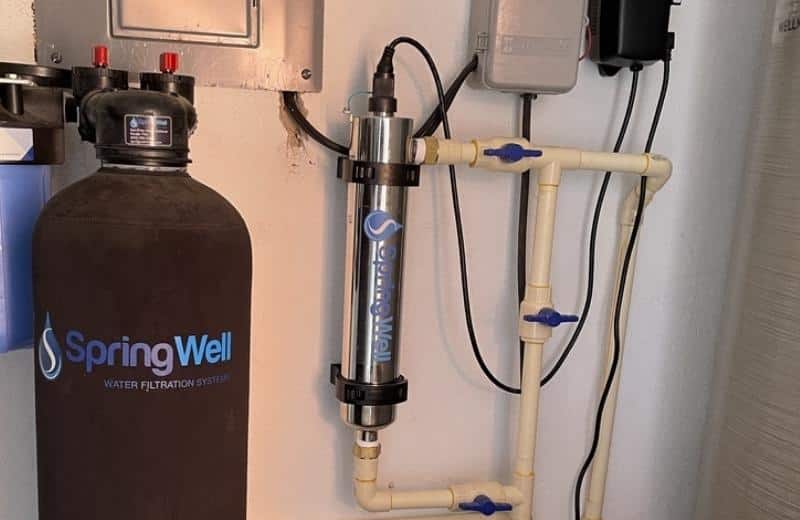
⛔️ How To Remove Chlorine From Water At Home
If your home’s water tastes chlorinated, that’s a good thing. It means your local water treatment plant has taken the necessary steps to treat water in your area. This should prevent microbiological contamination throughout water’s journey through the distribution system and the water pipes in your home.
However, there’s no reason why you should drink chlorinated water from your faucet. Once it reaches your home, water has very little likelihood of becoming re-contaminated, since you’ll either store it in a clean container or drink it straight away.
That means it’s safe to remove chlorine from your water once it has left the faucet.
Some of the best ways to remove chlorine from your home’s treated water supply include:
Let The Chlorine Dissipate
The easiest way to remove chlorine from your water is to simply let it dissipate into the air.
Chlorine is an extremely volatile chemical, so it’ll evaporate naturally if you leave it long enough. If you don’t want to pay for a chlorine removal solution, simply let your chlorinated water stand, and the chlorine will gradually leave.
Here’s how to remove chlorine from your water with the dissipation method:
- Fill a container with water from your tap. The container should have a large surface area to allow for as much of the water to be exposed to the air as possible.
- Place the container, uncovered, on a surface for 1-2 days.
- After this time, the majority of chlorine should have dissipated from your water.
The amount of time it takes for chlorine to dissipate depends on how much chlorine the water contains, the temperature of the stored water, the volume of water in the container, and the surface area of the container.
Boil Your Water
A faster way to remove chlorine through dissipation is to boil your drinking water.
We know that chlorine has a volatile nature and will eventually escape from water. Boiling your water will speed up this process, so if you don’t want to wait a full two days for your water to be chlorine-free, this is the better method for you.
To boil your water to remove chlorine, follow these steps:
- Fill a pot with the batch of water you want to boil.
- Place the pot on the stove on a high heat and bring the water to a rolling boil.
- Allow the water to boil for 15-20 minutes. Remember that some water will naturally evaporate in the process.
- Put the boiled water in a container and leave it to cool.
Again, the exact amount of time taken to produce chlorine-free water by boiling depends on the amount of chlorine in the water and the volume of water being boiled.
Use A Chlorine Removal Water Filter
Finally, the fastest method of removing chlorine from your water – which does involve spending some money – is to install a chlorine removal water filter.
A high-quality carbon-based filtered water system should effectively remove more than 90% of chlorine, including chemical tastes and odors, from your drinking water.
You can find activated carbon filters in a variety of filtration systems, including water filter pitchers, faucet filters, and under-sink systems.
You don’t have to spend a fortune on a carbon water filter, either. The Clearly Filtered Pitcher, our top-choice water filter pitcher, costs under $100 and removes 356+ contaminants from water, including up to 99.5% chlorine.
To use a water filter pitcher to remove chlorine, follow these steps:
- Add water from your tap into the top chamber of the pitcher.
- Wait for water to filter from the top chamber to the bottom chamber.
- Pour the filtered water from the pitcher.
👨🔧 Using a water filter to remove chlorine saves the time and effort of boiling your water or waiting for the chlorine to dissipate. We recommend using a chlorine-removal filtration process rather than resorting to buying bottled water, which will cost more money in the long run and isn’t the best for the environment.
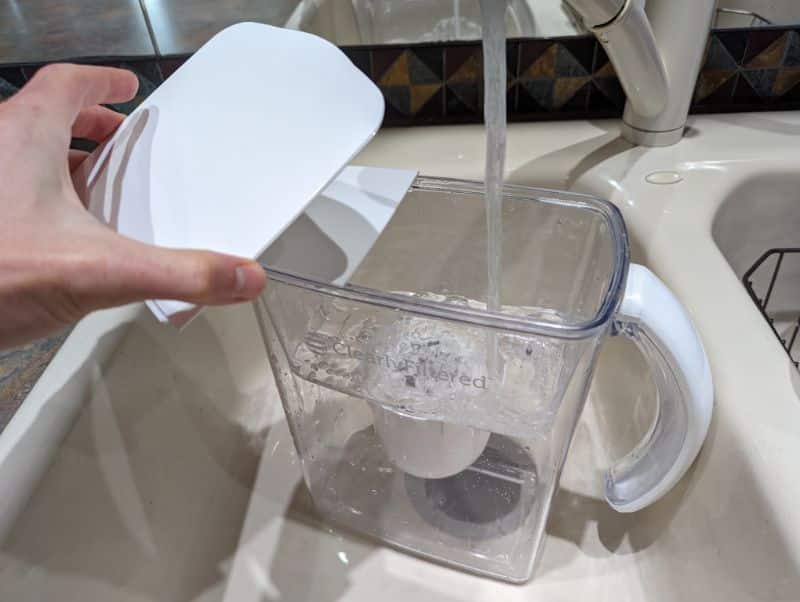
❔ Drinking Water Chlorination: FAQ
What is chlorination short answer?
Chlorination is the process of disinfecting water by adding a measured amount of chlorine to the water, which kills bacteria and other pathogens.
Is it safe to drink chlorine water?
Yes, it’s safe to drink tap water supplies that have been chlorinated with a chlorine-based product, like calcium hypochlorite or sodium hypochlorite, or chlorine gas. However, many people choose to filter their water to remove the chlorine taste and odor, which can be unpleasant. It’s NOT safe to drink chlorinated swimming pool water because this water contains a much higher concentration of chlorine.
How is chlorination of water done?
Chlorination of water is done by adding measured amounts of a chlorine solution or chlorine gas to a batch of water using a chemical feed system. Once the chlorine has had time to take effect (usually around 30 minutes), the water can be distributed in the public water system.
Is chlorine good for water treatment?
Yes, for public water systems, chlorine is good for water treatment because it’s an easy, effective, and affordable method of disease control. The chlorine water disinfection process is fast and uncomplicated, and chlorine is a reliable disinfectant, protecting the water from recontamination throughout its journey through the distribution system. However, other disinfection methods that don’t use chemicals (such as UV purification) are more desirable from a customer’s perspective because they don’t add anything to the water.
What happens if chlorine levels are too high in drinking water?
If chlorine levels in drinking water are too high, people who drink the water may experience health effects like nausea, vomiting, and diarrhea. Showering in water with high chlorine levels may cause itchy, irritated skin. A dangerously high concentration of chlorine in drinking water could even cause death.
Related: Can you be allergic to chlorine?
Does chlorine remove all pathogens in water?
No. While chlorine is a highly effective disinfectant, it doesn’t remove all pathogens in water. All bacteria and viruses are killed by chlorine, but certain protozoan cysts, such as Giardia and Cryptosporidium, are resistant to chlorine. If the untreated water supply contains these microorganisms, the water utility must consider another method of water disinfection.
